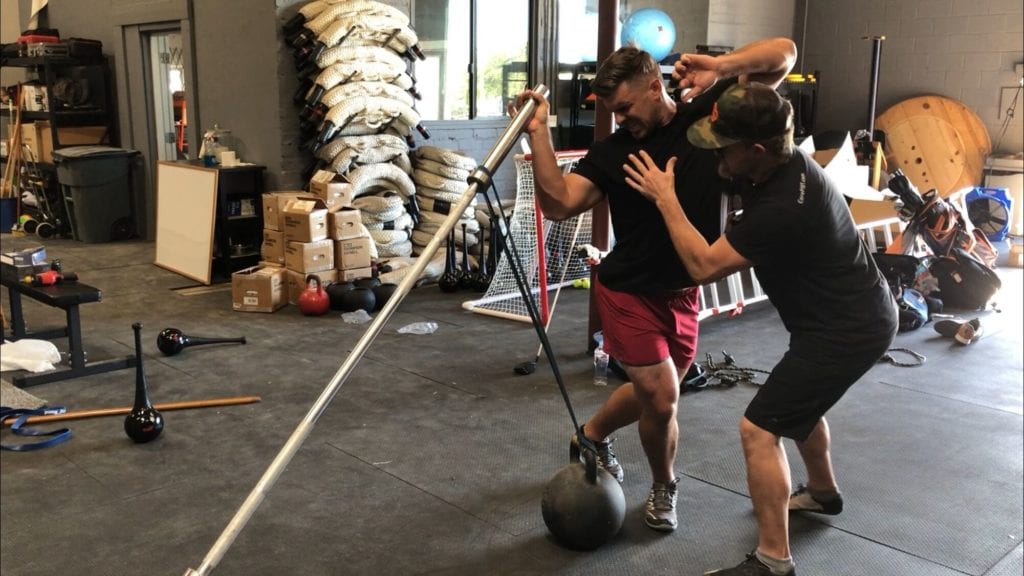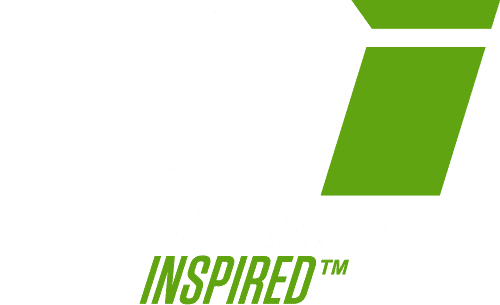Training Movement Patterns

Pulling
Strong, powerful athletes generally have big, strong backs. A commitment to the proper pulling movements will enhance overall strength dramatically, as well as have a huge effect on posture and overall body composition. Pulling movements consist of rowing and deadlifting patterns. While rows target the lats in a primarily upper-body movement, deadlifting patterns are a total-body lift, as the athlete picks an implement off of the ground and lifts it to a standing position.
Rows
To perform a proper row, follow these rowing principles:
- Use “big” posture. We want to maintain excellent posture at all times. Proper rowing promotes good posture, but if we start to slouch, we reinforce bad habits and work the wrong muscles. Keep your chest puffed out, neck long, and shoulders downed and relaxed. In a bent-over row, keep an arch in the lower back. When the back starts to slouch, take a break.
- Row “low.” Move the weight with your lats (the big muscles in your mid- and low-back), not your traps (the muscles in your shoulders). As we row, we want to keep our elbows low and pull the barbell or dumbbell into our bellybutton. The mistake most people make is bunching up their shoulders and pulling into their sternum. Over time, this will produce a slouched position, with the shoulders rolled forward, instead of down and back like we want.
We can execute a row with a number of different instruments, be it a cable machine, a barbell, an elastic band, or a suspension trainer. All are beneficial and appropriate. Mix and match to develop a strong, powerful back. Avoid machines, as we want the body to work as a comprehensive unit rather than isolating individual muscles. In real-life situations, when we pull, we work across the entire posterior chain, so train that way.
Deadlifts
Deadlifts involve simply lifting an object off of the ground. There is no faster way to become systematically stronger. It is a simple, primal movement everyone should frequently execute. There are two different kinds of deadlifts (standard and Romanian) and two stances (regular and sumo). While the standard deadlift allows knees to bend, a Romanian deadlift puts greater load on the hamstrings, using a big hip hinge with little knee bend. The standard stance places feet inside of the hands and is a “longer” pull as the athlete bends over more. The sumo stance places the grip inside of the feet and is a “shorter” pull as the athlete’s spine is in a more erect position.
No matter the stance or style, the deadlift consists of four steps and principles:
- Establish stance. The implement you are lifting should be close to you. A barbell should run above the middle of your feet; a kettlebell should be between the arches in your feet. Again, the kettlebell would be a sumo stance since your grip would be inside your feet.
- Bend and grip. Bend over and establish your grip. Don’t bend your knees and pull yourself down. This comes next.
- Pull down into tension. Once you have your grip, pull yourself down into a powerful position, letting your knees bend, while keeping your chest up, with a flat back. Before lifting, feel like you pull the “slack” or tension out of the bar.
- Pull into standing position. This pull takes place in two parts. First, feel like you are executing a leg press. Maintain posture and simply press and apply force into the ground with your legs. When the bar reaches the top of the knee, “pull” the hips through into extension and a standing position.
Incorporate a variety of pulling movements into your training program. Deadlift once per week and perform rowing movements twice per week. Don’t make the mistake of ignoring your back in favor of “sexy” exercises like the bench press, as you will develop an unbalanced composition. Deadlifting and developing the ability to execute big pulls is one of the fastest ways to develop musculature and build a strong, balanced body.


